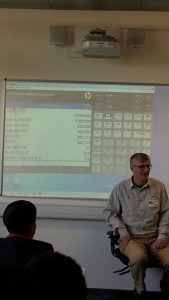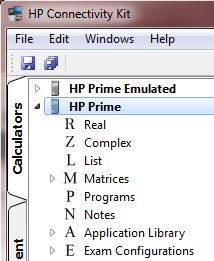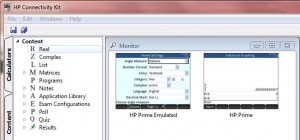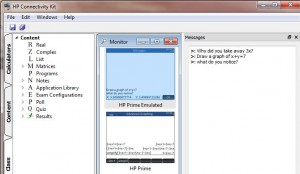I completed my PGCE in 1983 (oh my!) and went to work in a comprehensive school in Corby new town in the East Midlands. (Then it was the largest town in England without a railway station, somewhat depressed by the closure of the largest steelworks in Europe). The walls of my classroom had a large bench running all the way round. On this bench were set out about 8 RM 480Z work stations. For anyone who doesn’t remember, these were competitors to the BBC Micro. When I taught transformational geometry, I could pause in the lesson and get my students to gather round the computers and engage with an activity I set up for them where they would create a shape and transform it using LOGO. They would make hypotheses and test them, seeing the result immediately, visually, dynamically.
I have recently observed a number of lessons on transformational geometry in London comprehensives. Despite every classroom being fully equipped with a networked computer and an interactive whiteboard and in every case, the teacher having been trained within the last year on using GeoGebra to teach transformational geometry, not one single diagram moved at all in any of the lessons. Students were shown object and image and asked what transformation connected them. An agreement was reached (often with much disagreement and uncertainty) and that would be that. There was no way that anyone could validate the agreement or see the transformation enacted. This is the traditional teaching method of ‘proof by teacher says’ or its slightly more inclusive counterpart ‘proof by agreement’. Now, just in case anyone who was there in the room with me can recognise themselves, I should share that everything else about all of those lessons was really good, sometimes quite outstanding. It is simply that giving kids experience of the mathematics, rather than showing them how it works, seems to be such a long way from conventional school practice, that even with everything else in place, teachers find it hard to achieve. Yet in 1983, it was just what you did and we had reliable technological tools ready in the classroom to support it.
I have had lengthy discussions about technology in the classroom with colleagues in teacher education and most recently I have heard about the various classroom manager systems that are being developed by the hardware companies and the IWB people. The essential premise is that you connect to handheld devices that the students have. The screens of their devices are available in thumbnail format on the teacher machine and hence the classroom screen (and able to be enlarged to show the whole class the work of an individual). The software has polling and analysis, so questions and messages can be sent and answers received and engaged with. With this level of technology available, it will again be possible to do what I was happily doing in 1983, interrupting an ordinary lesson in an ordinary classroom to engage with an idea dynamically using technology and seeing what the students are doing (I wandered round and looked at the screens and if I saw something interesting, I got the others to come over and see). At the moment, teachers feel they have to book the computer room to achieve this effect and we all know how unlikely/impossible that is.
But it is a compelling thought. Now, the teacher can manage the dialogue, setting a task, students can engage with the software and discuss the issues. When ideas emerge these can be shared with the whole class. A real dialogic engagement. So, what’s stopping us? Wheel the trolley of laptops in and they will connect seemlessly to the network with no fuss and then it’s OK? Of, course it doesn’t/won’t. Not least because controlling dynamic software from a track pad is a nightmare, but have you ever made a half class set of Laptops connect to a network? So, bring in the set of iPads the school just massively invested in. Agh. No manager software and as yet only a very cut down version of GeoGebra.
The Holy Grail is that everyone turns their smart phones on and launches the iOS or Android app they need, and we get some generic tablets for those that don’t have smart phones and these all connect. Even then we would need better software (unless you invest £30 a head for TI-nspire on iOS which is really good). I hope to get delivery of a trial set of HP Prime wireless graphing calculators very soon. Naturally, they do everything that that I have said. The massive difference is that they have an auto detecting dongle (the same as the ones that make wireless keyboards work). No installation, no logging in, if the device is in the room, the screen appears on the teacher machine. People say: ‘what’s the point of graphing calculators these days?’ I say: it is a piece of bespoke hardware with an optimised interface for the range of maths functions you need, with really well developed and well thought out maths software. Moreover, compared to iPads they are really cheap. They are small, easy to carry and importantly easy to charge. You just have to be able to grab the box on your way into lesson and hand them out the same as you would hand out rulers and compasses and they just work when you turn them on. Only then can we get back to 1983 and have technology seemlessly integrated into ordinary lessons in ordinary classrooms. Only now we’ve got rather classier software to play with.
I would like to work with anyone who is using any comparable kit that can achieve the same effect. I would be delighted to set up a research project where we can examine the actual classroom use of these technologies. I would be keen to hear from schools who think that this sort of kit will solve the problem of static teaching and would think they could use such technology all the time (not just special occasions). I would happily support such work with loan equipment and support materials. Contact me (chris@themathszone.co.uk).
Apart from the dodgy hairdos and the rusty cars, 1983 had things going for it!



